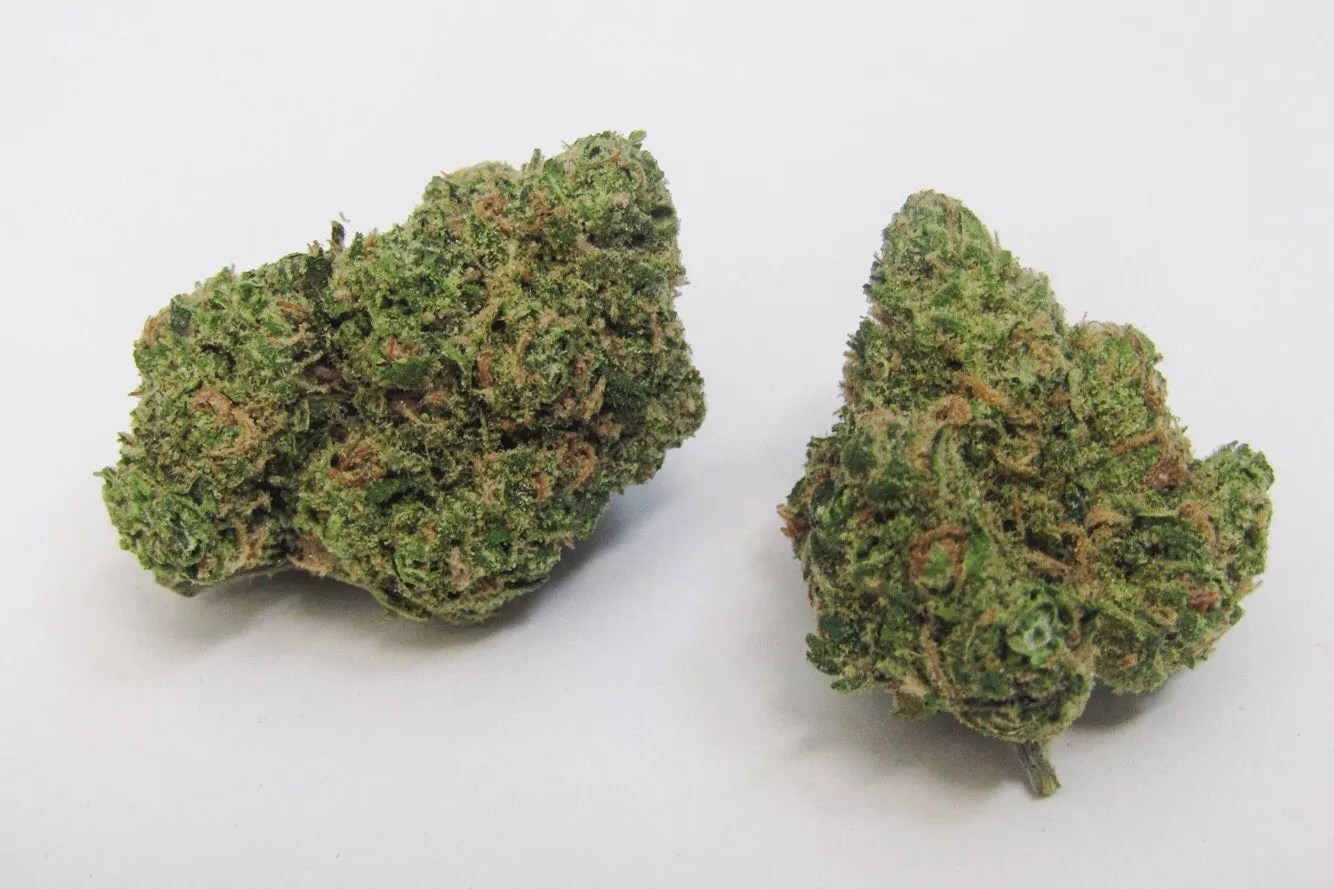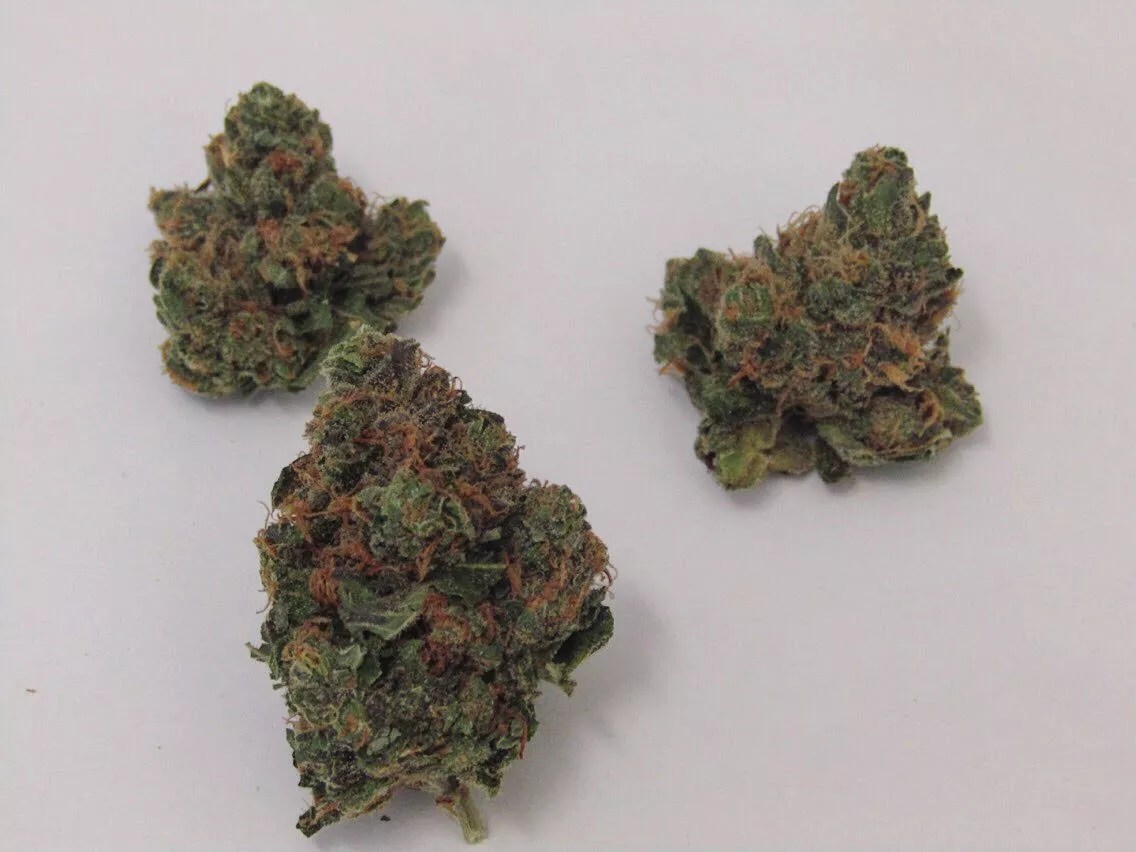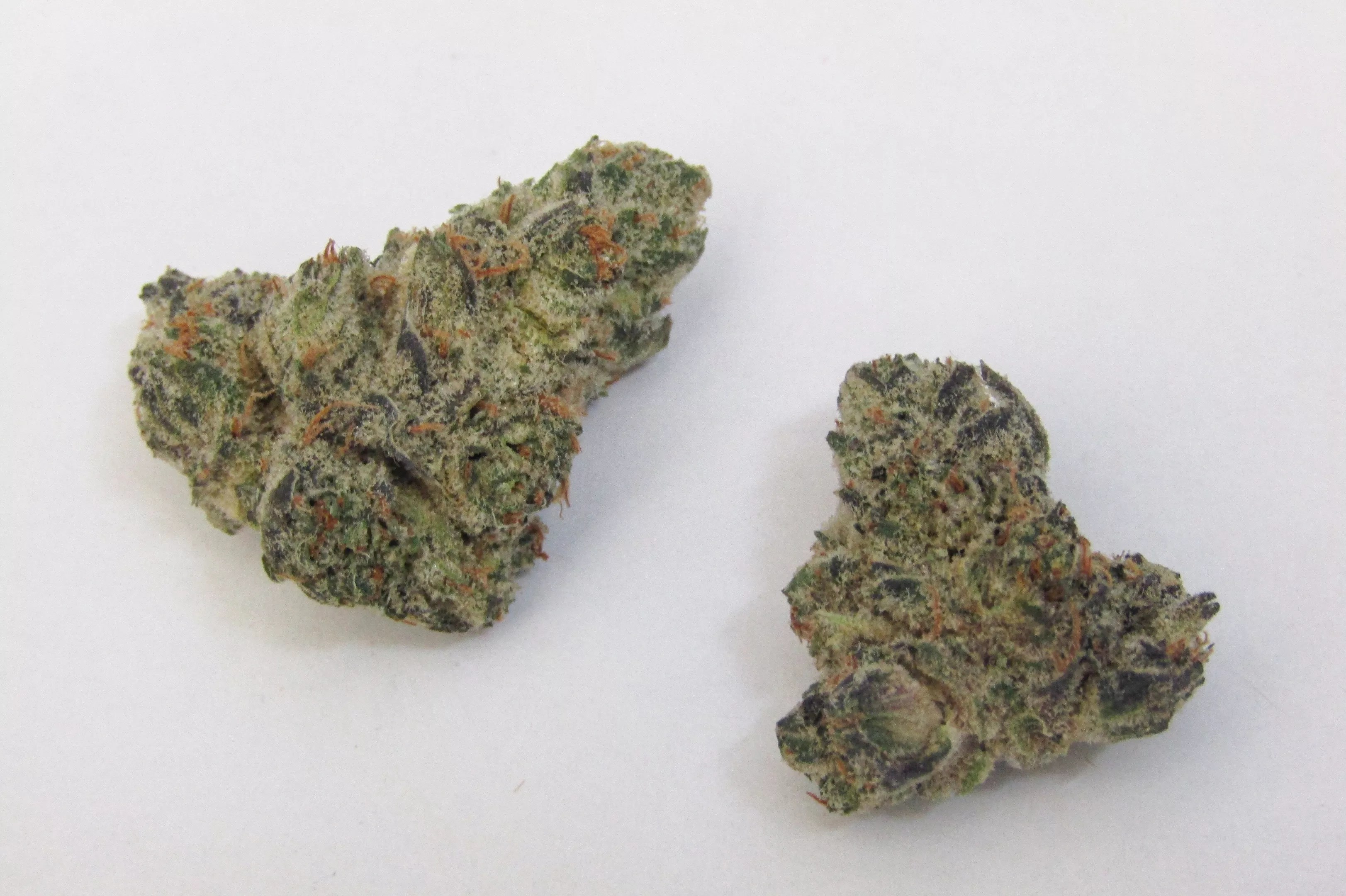
Herbert Fuego

Audio By Carbonatix
We hear it all the time from the old heads: “Weed is way stronger than it used to be.”
They’re not wrong. The THC levels in today’s cannabis are far higher than they were in the ’70s, ’80s and even early ’90s – but it’s not just the THC that makes a difference. Terpenes, the aromatic compounds responsible for the distinct smell and flavor of cannabis, may also affect how high we get after smoking weed, and terpenes change and evolve frequently, as well.
With today’s strains offering so many different mixtures of cannabinoids and terpenes, some users feel more comfortable smoking strains from the good ol’ days. But there’s just one problem: A lot of strains from the good ol’ days aren’t easy to find anymore. To help you stay in the loop, here are fifteen classic cannabis strains for Baby Boomers and Generation X. (And here are fifteen Denver dispensaries carrying them.)
Afghani
Afghani Kush is a naturally growing indica from the Hindu Kush mountains and a founding father in the strain world. Often referred to as a landrace because of its pure effects and genetics, Afghani Kush has an innate dankness that hits a warm spot in the heart of anyone looking to get sedated. Smells of berries and firewood jump out of each jar, with a little tinge of hash lingering behind. Pinching one of the bright-green buds releases even more pungent and sweet, earthy scents, and fingers quickly become sticky with ‘Ghani resin.
Will you step up to support Westword this year?
We’re aiming to raise $50,000 by December 31, so we can continue covering what matters most to this community. If Westword matters to you, please take action and contribute today, so when news happens, our reporters can be there.
Blueberry
Blueberry is one of the few varieties of flower that you’ll find in a dispensary that might be older than you, other than landrace strains – and that’s because it was bred from them. Blueberry is part of an old genetics line developed by famed breeder DJ Short that includes other hits like Blue Moonshine and Flo. In the 1970s, Short introduced Blueberry to Europe after mixing together a pure Afghani indica with pure Thai and possibly Mexican sativas. The result was a heavy, indica-dominant hybrid with a smell and taste unknown to cannabis but familiar in kitchens: sweet, sweet blueberry pie. The strain’s rich flavor is much closer to frozen concentrate than it is to diluted juice. Like Strawberry Cough, Blueberry has a syrupy aspect, but with earthy notes of hash at the end for balance rather than zest and spice.
Cannatonic
With a general CBD-to-THC ratio of 1:1 or 3:1, Cannatonic produces a manageable high that can disappear quickly. The relief in stress, tension and daily aches and pains lasts much longer, however, with the user’s remaining physical energy largely dependent on the state it was in before smoking. If you’ve had a long day, chances are Cannatonic will slowly lull you to the bed or couch – but when used after a light lunch, the strain can be invigorating and keep your body loose. This Spanish creation can’t be found at every dispensary, but it’s relatively attainable compared to most CBD strains.
Chocolope
Chocolope is one of the tastier classics out there. DNA Genetics, a cannabis breeder based in the Netherlands, created the strain in the 1980s, when high-quality genetics were just starting to hit the mainstream consumer. Admittedly, I had let its name push me away for a few years, thinking the “choco” part meant it would be like smoking a Tootsie Roll – but I was ignoring the second half. Since it’s bred from a Chocolate Thai mother and Cannalope Haze father, Chocolope’s flavor is much fruitier and more savory than its moniker implies. The strain’s bright color and old-school characteristics have made it a favorite for occasional users and anyone who smoked pot thirty years ago. The strain’s not a landrace, but it carries a motivating high with a soft landing,
Colombian Gold
Colombian Gold, a cousin to famed Mexican sativas, doesn’t carry quite the rep that Acapulco Gold does, but I was still ecstatic to see it at a local pot shop. The strain’s buds grow fat and tall on South American mountain ranges, tough against the intense sun, dry air and cold breezes of high altitude. Sounds like Colorado, right? The high it produces boosts energy and happiness, yet is easy to manage. Because of those easygoing effects, I never worry about what time of day I indulge.
Durban Poison
After being smuggled out of Africa in the ’70s, Durban Poison gained popularity in Amsterdam because of its heavy smell and short flowering period, and it didn’t take long for word to cross the Atlantic. Today, Durban Poison makes a legitimate argument for a spot on the Mount Rushmore of strains, having fathered such popular children as Cherry Pie, Girl Scout Cookies and many more. As cool as the thought of 100 percent sativa sounds to pot purists, many Durban Poison cuts currently available don’t have the same stalwart genetics that were keistered out of Africa. Still, despite the dilution of time, most Durban Poison phenotypes share the same timeless qualities that make it an easy strain to detect.

Purple Kush
Herbert Fuego
Flo
A child of Purple Thai and Afghani, Flo is a 50/50 hybrid that traces its lineage back to the mid-’90s. Its trademark streaks of violet and energetic high have ensured its place in history, but Flo lacks the sexy name and hype of strains like Birthday Cake Kush or Platinum Girl Scout Cookies. Today the name “Flo” more commonly conjures car-insurance commercials, yet the strain has remained highly respected in the pot community for about twenty years. Here’s to another two decades.
Purple Kush
Of all the purp strains out there, Purple Kush might be the most classic and definitive – and would likely be the unquestioned number one if Jimi Hendrix hadn’t made a song about Purple Haze. Purple Kush is a child of Hindu Kush and Purple Afghani, two strains with classic, clear genetics and extremely relaxing effects, so be prepared to yawn and stretch quite a bit after a session. Grape Ape, Grand Daddy Purp, Purple Trainwreck, Grape God Bud, Mendocino Purps, Purple Urkle…we could continue naming violet varieties for a while. But few of them are as easily attainable – or, more important, as reliable – as Purple Kush.
Harlequin
Although it’s a CBD strain, Harlequin packs quite the daytime uplift, known for melting away pain and anxiety while easing stress and fatigue. The strain is much more popular for medical use than recreational, but its relaxing yet invigorating effects are a favorite for the productive smoker or those who prefer lighter THC effects. Just remember to keep a water bottle with you: The cottonmouth is strong with this one.

Hash Plant
Herbert Fuego
Hash Plant
Few cannabis strains have names as straight to the point as Hash Plant, and you don’t need to phone a friend to guess what the popularity stems from: The strain’s resin-glazed buds and short flowering period make it a natural candidate for extraction, and the heavy Afghani characteristics that dominate Hash Plant’s lineage are synonymous with Eastern bubble and finger hash. A flagship breeding effort from Sensi Seeds, Hash Plant has a small Northern Lights influence that pairs well with its Afghani lineage, creating spicy, woody scents of bubble gum with a skunky back end.
Lamb’s Bread
This classic strain doesn’t need any exotic flavors or frills to demand your respect. Commonly – but mistakenly – referred to as “Lamb’s Breath,” Lamb’s Bread is an old-school daytime strain hailing from Jamaica. Its actual origins are mysterious, but it might as well be a landrace, because the high is one of the cleaner you’ll come across. The strain’s woody, sour notes are uplifting and straight to the point, just like its effects. However, smoking it on less than a full eight hours of sleep can lead to drowsiness once the high wears off. And just because the fifty-and-up crowd might like Lamb’s Bread doesn’t mean you won’t, too. Light up a joint of this Jamaican jolt with your favorite AARP member, head over to a 4:30 p.m. fish fry, and finish it off with a pint of butter pecan ice cream before calling it a night. If that doesn’t scream #luxury, then what does?
Maui Wowie
Lucky for us, Maui Wowie has been able to protect its roots and reputation while still being accessible to every socks-and-sandals-wearing goober in the United States. This daytime pakalolo (that’s Hawaiian for “weed”) hails from Hawaii, gaining notoriety for its up-tempo yet smooth high in the 1960s and really branching out in the mainland at some point in the ’80s. Although cross-breeding and inevitable variances in phenotypes have muddled most of the cuts of Maui Wowie you’ll come across nowadays, the genetics are generally very sativa-dominant, and the energetic effects and fruity flavors are nearly the same. Expect a sweet, fruity flavor up front, followed by a tart citrus taste at the end – but just like its homeland, it’s smooth and mellow.

Mendo Breath
Herbert Fuego
Mendo Breath
Mendo Breath is a child of OGKushBreath and Mendo Purps, an older hybrid with Trainwreck and White Widow genetics. The potent nighttime strain has a similar lineage to that of Girl Scout Cookies, with a sweet Durban Poison influence in its background. Unlike Cookies strains, however, Mendo Breath is quite zesty, with a layer of citrus, and leaves no question about what time of day it should be consumed – almost like a nighttime Haze. Initial euphoria is quickly kicked to the curb by munchies, yawns and an insatiable need to stretch on the couch in front of the TV. The robust high has been used to treat eating and sleeping disorders, pain, headaches and stress, among other ailments.
Pre-’98 Bubba Kush
Bubba Kush got its start in the mid-’90s, when (allegedly) an OG Kush strain was pollinated by what its breeder believed to be Northern Lights. The heavy-hitting strain was named “Bubba,” and the rest is terpene history. Since Bubba’s inception, the strain’s genetics have become somewhat diluted (as have the genetics of most strains), but to highlight the distinctions, the weed world has dubbed the original “Pre-’98 Bubba Kush” and refers to the new version as simply “Bubba Kush.” Old-school potheads and purists prefer the Pre-’98 because of its purer genetics, but the new version hits harder, yields more and carries a very similar smell and flavor.
UK Cheese
UK Cheese became popular overseas in the ’90s after a group of British growers going by the name of Exodus reportedly took a phenotype of Skunk #1 and bred it to pull out more creamy, sweet notes. Thanks to the strain’s unique flavor, it didn’t take long for UK Cheese to spread to Amsterdam, then America. Skunk #1 was sort of the OG Kush of its time in terms of cannabis breeding, responsible for a number of strains around the country. As a phenotype, UK Cheese doesn’t necessarily count as a child of Skunk #1 (maybe more of a fraternal twin), but it’s still my favorite spawn. Another cheesy phenotype of Skunk #1 from England, simply called “Cheese,” is a nighttime-leaning version of UK Cheese and carries a very similar flavor.